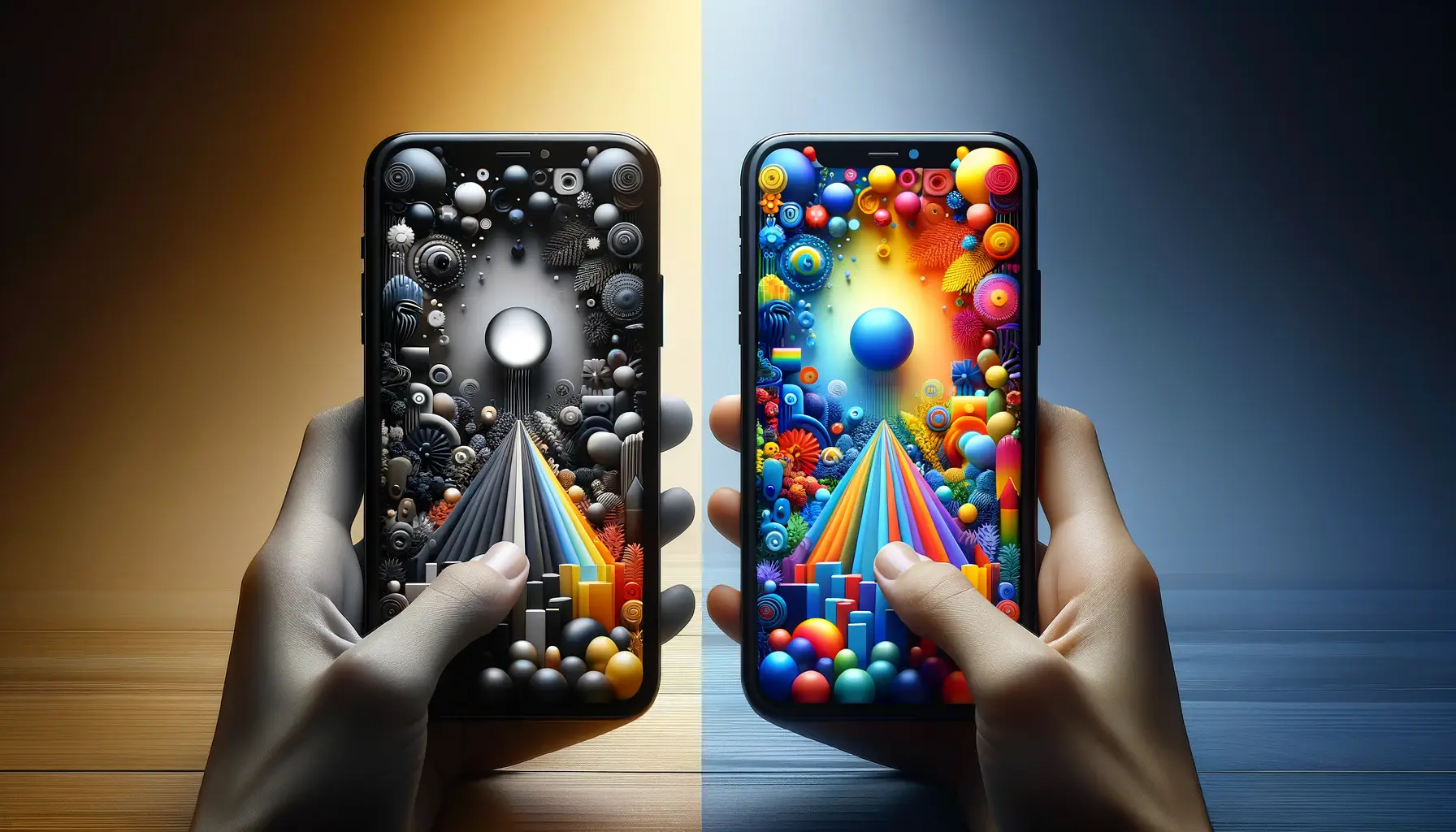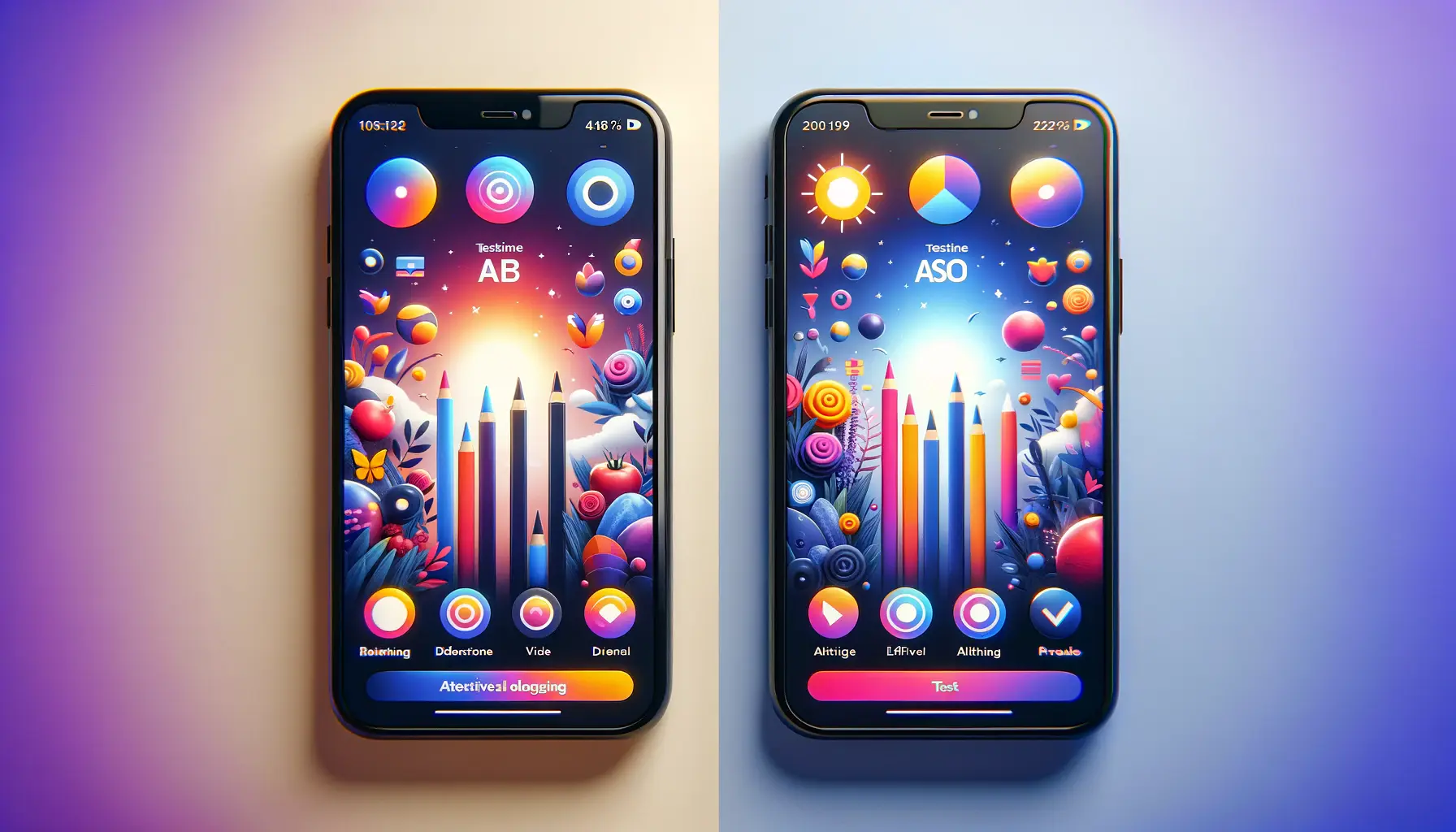App Store Optimization (ASO) is a critical factor in the digital success of mobile applications, determining their visibility and appeal to potential users in app stores.
Among the numerous elements that contribute to effective ASO, screenshots stand out as a powerful tool for capturing user attention and conveying an app’s features and benefits at a glance.
This article delves into the art and science of analyzing competitor screenshots within the ASO framework, offering actionable insights to enhance your app’s market presence.
Competitor analysis, especially focusing on screenshots, provides a wealth of knowledge about market trends, user preferences, and effective communication strategies.
By examining how competitors leverage screenshots to highlight their app’s unique selling propositions, developers and marketers can identify opportunities to refine their own ASO strategies.
This approach not only enhances an app’s visual appeal but also aligns it more closely with user expectations, driving better engagement rates and downloads.
- Understanding the Role of Screenshots in ASO
- Conducting Effective Competitor Screenshot Analysis
- Optimizing Screenshot Design for Maximum Engagement
- Highlighting Unique Features and Benefits
- Engaging Users with Emotional and Social Proof
- Utilizing Dynamic and Interactive Elements
- Adapting to Trends and User Feedback
- Mastering ASO Through Competitor Screenshot Analysis
- ASO Screenshots FAQs
Understanding the Role of Screenshots in ASO
The Impact of Visuals on User Perception
Visual elements play a pivotal role in shaping user perceptions and decisions.
Screenshots, as the visual forefront of an app’s store listing, offer a snapshot of the user experience, functionality, and aesthetics of the app.
They serve as a first impression, significantly influencing users’ decisions to download or bypass an app.
The right combination of visuals can communicate an app’s value proposition effectively, making it stand out in a crowded marketplace.
Moreover, screenshots can be strategically used to showcase key features, updates, or unique aspects of the app that may appeal to the target audience.
This visual communication is crucial in a user’s decision-making process, as it provides a tangible glimpse into what the app offers without the need for textual explanations.
Thus, optimizing screenshots is not just about aesthetics but about crafting a narrative that resonates with potential users.
Best Practices for ASO Screenshot Optimization
To maximize the impact of screenshots on ASO, it’s essential to follow certain best practices.
This includes using high-quality images that accurately represent the app’s features and user interface.
Screenshots should be clear, engaging, and relevant to the app’s core functionality, ensuring that they communicate the app’s value effectively.
It’s also beneficial to update screenshots regularly to reflect new features or improvements, keeping the app’s presentation fresh and appealing to both new and existing users.
Another tactic involves analyzing competitors’ screenshots for insights into what works well in your app category.
Identifying common themes, features highlighted, or presentation styles can uncover gaps in your own ASO strategy or inspire innovative approaches to differentiate your app.
Incorporating user feedback into screenshot selection can also enhance relevance and appeal, ensuring that the visuals align with what actual users find valuable or compelling.
Analyzing and optimizing app screenshots based on best practices and competitor insights can significantly improve an app’s visibility and appeal, driving higher download rates and user engagement.
Conducting Effective Competitor Screenshot Analysis
Competitor analysis is a cornerstone of ASO strategy, providing invaluable insights into the market and helping to pinpoint areas for improvement.
Analyzing competitor screenshots is not merely about observing what others are doing but understanding why certain elements work and how they can be adapted to suit your app’s unique value proposition.
Here’s how to conduct an effective competitor screenshot analysis.
Identifying Key Competitors
Start by identifying apps that directly compete with yours in terms of features, target audience, and category.
Utilize app store search features, category rankings, and ASO tools to compile a list of relevant competitors.
This selection should represent a mix of top-performing apps and those that closely align with your app’s functionality and user base.
Assessing Visual Strategies
Examine each competitor’s screenshots to evaluate their visual strategies.
Pay attention to:
- The number of screenshots used and the app store’s allowance.
- Image quality, including resolution and clarity.
- The use of captions or text overlays to highlight features.
- Color schemes and visual themes.
- How they sequence the screenshots to tell a compelling story or demonstrate the app’s flow.
Analyzing Content Focus
Dive deeper into the content of each screenshot to understand the focus areas.
Look for patterns in how competitors prioritize app features, benefits, or user experiences.
This analysis can reveal market trends and user preferences, guiding you to emphasize similar features in your app’s screenshots or to differentiate your app by highlighting unique attributes.
Additionally, consider the context in which features are presented.
Are competitors focusing on real-world application, ease of use, social proof, or innovation?
Understanding this context can help tailor your screenshots to match user intent and expectations more closely.
Leveraging Insights for Optimization
Compile your findings into actionable insights for optimizing your app’s screenshots.
This might include adopting certain visual elements that are proven to attract attention, focusing on features that are underrepresented in your current visuals, or experimenting with new approaches to storytelling through screenshots.
Remember, the goal is not to copy competitors but to understand the underlying strategies that make their visuals effective.
Adapt these strategies to fit your app’s branding and value proposition, ensuring that your screenshots are both competitive and authentic.
Consider user feedback and reviews in your analysis. Users often mention what they like or dislike about app functionalities in reviews, which can provide direct insights into what to highlight in your screenshots.
Optimizing Screenshot Design for Maximum Engagement
Once you’ve gathered insights from competitor analysis, the next step is to optimize your app’s screenshots for maximum engagement.
This involves careful consideration of design elements, messaging, and the overall narrative that your visuals convey.
A well-optimized set of screenshots can significantly enhance your app’s appeal, encouraging more downloads and active use.
Let’s explore how to achieve this.
Designing screenshots that captivate and inform requires a balance of creativity and clarity.
The objective is to showcase your app’s functionality and benefits in a way that resonates with your target audience.
To start, select high-quality images that clearly demonstrate the app in action.
Use real-life scenarios where possible to help users visualize how the app fits into their daily lives.
Implementing Visual Hierarchy
Visual hierarchy is crucial in guiding viewers’ attention to the most important elements of each screenshot.
Achieve this by:
- Placing key features or messages in the foreground, using size and color contrasts.
- Organizing screenshots in a logical sequence that mirrors the user’s journey or highlights the app’s value proposition.
This approach not only makes the screenshots more engaging but also helps communicate the app’s benefits more effectively.
Incorporating Effective Copy
While visuals capture attention, concise and compelling copy clarifies and reinforces the message.
Incorporate brief captions or text overlays that highlight the app’s key features or benefits.
Ensure the copy is:
- Direct and to the point, avoiding jargon or overly technical language.
- Benefit-focused, explaining not just what the app does but why it matters to the user.
This textual content should complement the visuals, creating a cohesive narrative that engages users and prompts them to download.
Testing and Iteration
Optimization is an ongoing process, requiring regular testing and iteration to find the most effective screenshot configurations.
A/B testing can be particularly valuable here, allowing you to compare different designs and layouts to see what resonates best with your target audience.
Monitor key metrics such as click-through rates and download numbers to gauge the effectiveness of your screenshots and make informed adjustments over time.
Remember, the aim is to continuously refine your screenshots based on user feedback, competitive insights, and performance data.
This proactive approach ensures that your app remains appealing and relevant in an ever-evolving market.
Stay updated with app store guidelines and trends, as these can influence the effectiveness of your screenshot designs and strategies.
Highlighting Unique Features and Benefits
To stand out in the crowded app marketplace, it’s crucial to effectively highlight your app’s unique features and benefits through your screenshots.
This not only helps differentiate your app from competitors but also clearly communicates its value proposition to potential users.
Crafting screenshots that effectively showcase what makes your app special requires a strategic approach.
Start by identifying the core features or benefits that set your app apart from others in the same category.
Consider functionality that addresses specific user needs, innovative solutions, or superior design aesthetics.
Once identified, these unique selling points (USPs) should be prominently featured in your screenshots to capture users’ interest and convey the app’s distinct advantages.
Creating a Compelling Narrative
A compelling narrative through your screenshots can guide users through the app’s key features and benefits, making a strong case for why they should download it.
Consider the following strategies:
- Sequence your screenshots to tell a story, starting with the most impactful USP and following with supporting features.
- Use real-life scenarios or use cases that demonstrate the app’s value in everyday situations.
This narrative approach helps potential users visualize the app’s impact on their lives, increasing the likelihood of them taking the next step to download.
Utilizing Visual Cues and Annotations
Visual cues and annotations can be powerful tools to direct users’ attention to your app’s USPs.
Employ tactics such as:
- Zooming in on specific app features or using arrows and highlights to draw focus.
- Including short, impactful annotations or captions that explain the USP’s relevance and benefits.
These elements should complement the app’s visual narrative, adding clarity and emphasis to the key messages you wish to convey.
Testing for Impact
As with any aspect of ASO, testing is essential to ensure your screenshots effectively highlight your app’s USPs.
A/B testing different versions can reveal what resonates most with your target audience, allowing you to refine your approach based on concrete data.
Pay attention to metrics like engagement rates, download numbers, and user feedback to gauge the effectiveness of your screenshots in highlighting unique features and benefits.
By strategically focusing on your app’s USPs in your screenshots, you can more effectively communicate its value and stand out in a competitive marketplace.
This focus not only aids in attracting initial user interest but also supports long-term engagement by aligning with user needs and expectations.
Showcasing your app’s unique features and benefits through screenshots is key to differentiating it in the app store and compelling users to download.
Engaging Users with Emotional and Social Proof
Engaging users and driving downloads go beyond showcasing features and functionality; tapping into emotional appeal and providing social proof through screenshots can significantly enhance your ASO strategy.
These elements resonate with potential users on a personal level, making your app more relatable and trustworthy.
Let’s explore how to leverage these powerful tactics in your screenshots.
Emotional appeal involves connecting with users on a personal level, making them feel understood and catered to.
This can be achieved by highlighting scenarios that evoke relatable feelings or situations where the app provides a solution to a common problem.
Similarly, incorporating social proof, such as user testimonials or popularity metrics, reassures users of the app’s credibility and value based on others’ experiences.
Incorporating Emotional Appeal
To incorporate emotional appeal into your screenshots:
- Identify common pain points or desires your target audience experiences that your app addresses.
- Use imagery and scenarios in your screenshots that reflect these emotions or situations, showing your app as the solution.
By doing so, you create an immediate connection with potential users, making the app more appealing and relatable.
Highlighting Social Proof
Social proof can be a decisive factor for users considering whether to download your app.
To integrate social proof into your screenshots, consider:
- Featuring user reviews, ratings, or testimonials that speak to the app’s effectiveness and popularity.
- Displaying awards, recognitions, or endorsements the app has received.
- Indicating the number of downloads or active users to showcase the app’s popularity and community size.
This approach not only validates the app’s quality and reliability but also builds a sense of community and trust among potential users.
Optimizing for Emotional and Social Engagement
Effectively combining emotional appeal and social proof requires thoughtful optimization.
Ensure that the emotional cues and social proof elements are seamlessly integrated into your screenshots, enhancing rather than overwhelming the presentation.
A/B testing different approaches can help identify the most effective combination of emotional engagement and social proof, enabling you to refine your screenshots for maximum impact.
Remember, the goal is to make potential users feel confident in their choice to download your app by addressing their needs and demonstrating the app’s value through the experiences of others.
By effectively leveraging emotional appeal and social proof in your screenshots, you can significantly increase user engagement and conversions.
Emotional appeal and social proof in screenshots are powerful tools for connecting with users and building trust, leading to higher download rates and user engagement.
Utilizing Dynamic and Interactive Elements
In the quest to optimize App Store Optimization (ASO) strategies, the integration of dynamic and interactive elements in screenshots emerges as a cutting-edge approach.
This innovation not only captivates users’ attention but also offers a more immersive preview of the app’s capabilities.
Although the app stores primarily support static images for screenshots, there are creative ways to simulate interactivity and motion within these constraints, enhancing user engagement and interest.
To bridge the gap between static visuals and the dynamic experience of using the app, developers and marketers are adopting novel approaches.
By simulating the effect of interaction within screenshots, you can provide potential users with a more vivid understanding of what to expect from the app.
This section explores techniques to infuse dynamism into your app’s presentation.
Crafting a Sense of Movement
Even within the static format of app store screenshots, you can create a sense of movement and action.
Consider these strategies:
- Sequential screenshots that mimic user interaction, such as navigating through the app’s menu or completing a task.
- Using visual effects like motion blur or directional arrows to suggest movement and guide the viewer’s eye through the features being showcased.
These techniques can make your screenshots more engaging, giving users a taste of the app’s fluidity and responsiveness.
Simulating Interactivity
To simulate interactivity within your screenshots:
- Highlight interactive elements of your app, like buttons or sliders, using visual cues that suggest tap or swipe actions.
- Incorporate callouts or annotations that invite users to imagine interacting with the app, such as “Swipe left to discover more” or “Tap to play.”
This approach helps users mentally interact with the app, increasing their interest and the likelihood of a download.
Leveraging Graphic Design
Advanced graphic design techniques can play a pivotal role in creating dynamic and interactive-looking screenshots.
Employing gradients, shadows, and layering can add depth and vitality, making static images appear more lively and engaging.
Thoughtfully designed screenshots can bridge the gap between a user’s initial impression and the actual app experience, enticing them to explore what the app has to offer.
Ultimately, the goal is to use dynamic and interactive elements to convey the essence of the app’s user experience.
This strategy not only differentiates your app in a crowded marketplace but also aligns with users’ expectations for high-quality, engaging digital experiences.
Through creative presentation and subtle cues, you can create a compelling visual narrative that resonates with your target audience, driving more downloads and active use.
Assuming static screenshots cannot be dynamic or interactive is a misconception; with creative approaches, it’s possible to convey a sense of action and engagement.
Adapting to Trends and User Feedback
In the dynamic landscape of mobile applications, staying attuned to evolving trends and user feedback is crucial for maintaining an effective ASO strategy.
Screenshots, as a vital component of your app’s presentation in the app stores, should be regularly updated and optimized based on the latest trends and the insights gathered from user interactions.
This adaptability not only ensures your app remains relevant and appealing to new users but also fosters a sense of ongoing engagement and improvement for existing users.
Adapting to trends involves more than just following the crowd; it requires a discerning approach to incorporate elements that truly resonate with your target audience and reflect the current direction of app design and user experience.
Similarly, integrating user feedback into your screenshots signifies that you value users’ opinions and are committed to enhancing their experience.
Monitoring Market Trends
Keeping an eye on market trends allows you to identify shifts in design preferences, user behavior, and technological advancements.
Implement strategies such as:
- Regularly reviewing top-performing apps in your category for design and presentation updates.
- Attending webinars, conferences, and following industry blogs to stay informed about emerging ASO strategies.
By aligning your screenshots with current trends, you ensure your app’s presentation is fresh, relevant, and competitive.
Incorporating User Feedback
User feedback is a goldmine of insights into what works well and what could be improved in your app.
To leverage this feedback:
- Analyze reviews and ratings for suggestions on features or aspects users enjoy or find lacking.
- Engage with users through surveys or social media to gather direct input on your screenshots and overall app presentation.
Adapting your screenshots based on this feedback demonstrates responsiveness to user needs, potentially increasing satisfaction and loyalty.
Iterative Optimization
The process of adapting to trends and user feedback should be iterative, involving continuous testing, learning, and refining.
This approach ensures your ASO strategy remains agile and responsive to the changing app ecosystem.
A/B testing different screenshot variations can provide concrete data on what resonates most with your target audience, enabling you to make informed decisions about future updates.
Embracing change and feedback is essential for sustained success in the app stores.
By regularly updating your screenshots to reflect the latest trends and user preferences, you not only enhance your app’s appeal but also signal an ongoing commitment to excellence and user satisfaction.
This proactive stance can differentiate your app in a crowded marketplace, driving increased downloads and fostering a loyal user base.
Continually adapting your app’s screenshots to current trends and user feedback is key to maintaining relevance and engagement in the competitive app marketplace.
Mastering ASO Through Competitor Screenshot Analysis
Throughout this exploration into optimizing App Store Optimization (ASO) via competitor screenshot analysis, we’ve unveiled the multi-layered complexity and the undeniable significance of well-crafted screenshots.
As the digital storefront for your app, screenshots do not merely decorate your listing but play a pivotal role in communicating your app’s value, enticing potential users, and ultimately influencing their decision to engage with your product.
The strategic analysis of competitor screenshots, coupled with an innovative approach to showcasing your app’s features and benefits, creates a formidable tool in the ever-competitive app market.
Key Takeaways for Elevating Your ASO Strategy
Let’s recap some of the essential strategies and insights gathered:
- Understanding the critical role of visuals in user perception and decision-making emphasizes the need for high-quality, engaging screenshots.
- Conducting a thorough analysis of competitor screenshots provides valuable insights into market trends, effective visual strategies, and user preferences.
- Optimizing screenshot design for maximum engagement requires a blend of creativity, clarity, and a keen understanding of user needs.
- Highlighting your app’s unique features and benefits through screenshots can significantly differentiate your app in a crowded marketplace.
- Engaging users with emotional and social proof strengthens your app’s credibility and relatability, fostering trust and loyalty among your target audience.
- Incorporating dynamic and interactive elements into screenshots, even within static constraints, can simulate the vibrant experience of using the app.
- Adapting to trends and integrating user feedback into your ASO strategy ensures your app remains relevant, appealing, and competitive over time.
The journey through optimizing ASO via competitor screenshots underscores the necessity of a nuanced, informed approach to app store presentations.
This not only involves the technical aspects of screenshot optimization but also a deep dive into understanding market dynamics, user psychology, and the subtle art of visual storytelling.
Forging Ahead in the ASO Landscape
In conclusion, mastering ASO through competitor screenshot analysis is an ongoing, dynamic process that demands vigilance, creativity, and a willingness to adapt.
As app markets evolve and user preferences shift, so too must your strategies for showcasing your app.
Embrace these changes as opportunities to learn, innovate, and stand out.
Remember, in the vast sea of digital offerings, your app’s screenshots are the beacon that guides users to your shores.
Make them count.
Boost your mobile app's success with our guaranteed App Store Optimization (ASO) service. Leave it to the experts!
ASO Screenshots FAQs
Explore frequently asked questions to enhance your understanding of utilizing screenshots for App Store Optimization (ASO).
Screenshots visually convey your app’s features and user experience, directly impacting users’ download decisions by showcasing app functionality and appeal.
The optimal number varies by app store guidelines, but generally, using the maximum allowed can effectively showcase your app’s features and benefits.
Focus on your app’s core features, user benefits, unique selling points, and any elements that differentiate it from competitors to attract potential users.
Yes, adding concise, descriptive text overlays can enhance screenshot effectiveness by clearly explaining features and benefits to potential users.
Regular updates reflecting new features, user feedback, or market trends ensure your screenshots remain relevant and appealing to prospective users.
Localizing screenshots for target markets can significantly increase app appeal by catering to the cultural and language preferences of local users.
Examine competitors’ visuals for design trends, feature emphasis, and user engagement strategies to identify opportunities to improve your own ASO approach.
While app stores support static images, simulating dynamic interactions through sequential screenshots or visual cues can create a sense of action and interactivity.










